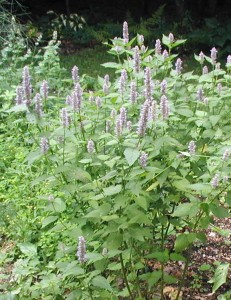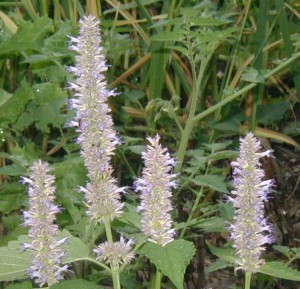It’s about time for the landscape to turn green as we’re already a couple weeks into Spring. The light snow that has fallen during the night for the last few days would have you thinking otherwise. Good thing the snow won’t last because we’re very ready to start gardening with our herbs.
Lettuce, peas and onion sets are already planted in the garden. Last night’s snow would be called an “Onion Snow” because it covered over the onions that were planted a week ago. The ground is still cold, but when it warms up the onions will start growing quickly.
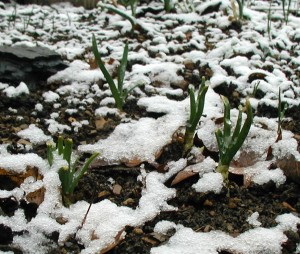
Onions that were water-logged last year and whose tops died back have sprouted. I was surprised that any root remained for re-growth, but the greenery is already 4-6 inches tall.
Garlic and chives are re-growing and soon they’ll be on the dinner table. You could as easily call this a “Chives Snow” instead of an Onion Snow. The wild chives that we see growing in the woods are the only green thing growing under the trees right now, except for a rare fern here and there starting to green up.
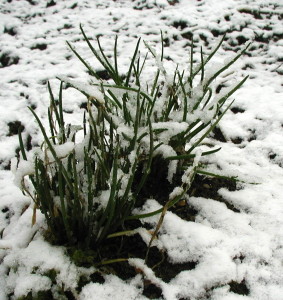
I think I’ll snip off some chives for a potato and egg dish tonight. Here’s a quick recipe for Potato, Egg and Chives:
- Heat a tablespoon of olive oil in a skillet and add half an onion, diced.
- Cook the onions until soft.
- Add a couple of cubed potatoes, cover and steam until cooked through.
- Beat a couple of eggs in a separate dish or add them directly into the skillet.
- Cover for one minute and then flip the whole mess for another minute or just stir everything together.
- When the eggs are set, sprinkle with pepper and cut chives.
- Serve with toast. Yum!
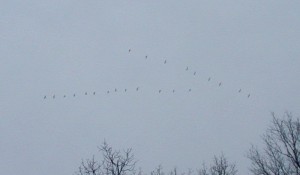
The Canada Geese I heard overhead this morning were flying due North and that was a happy sight!
